In 1894, when Congress created the holiday now known as Labor Day, the world was a different place -- indeed, many states were still just baby territories back then.
But things were especially different for the workers, many of whom often struggled in dangerous conditions for little pay. So just how are things different today?
In 1894...
1. There Was No Minimum Wage (Photo credit: Library Of Congress, "N.C. 1st tory Marble Carving Shop," 1894)
(Photo credit: Library Of Congress, "N.C. 1st tory Marble Carving Shop," 1894)
It wasn't until 1938 that President Franklin D. Roosevelt signed the Fair Labor Standards Act, which set a minimum hourly wage of 25 cents. The act was the culmination of decades of hard work by organized labor to convince lawmakers that minimum pay standards were necessary.
2. Many Children Fell Victim To Oppressive Child Labor  (Photo credit: Flickr, "488 Macon, Ga. Lewis W. Hine 1-19-1909. Bibb Mill No. 1," 1909)
(Photo credit: Flickr, "488 Macon, Ga. Lewis W. Hine 1-19-1909. Bibb Mill No. 1," 1909)
The Fair Labor Standards Act also regulated and banned oppressive child labor. But before then, children often worked long hours in physically demanding factory jobs.
3. Workers Were Sometimes Killed For Striking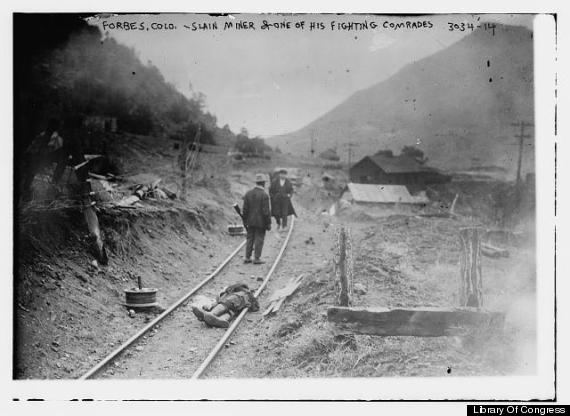 (Photo credit: Library Of Congress, "Slain miner & one of his fighting comrades," 1914)
(Photo credit: Library Of Congress, "Slain miner & one of his fighting comrades," 1914)
In just one of several examples, company guards fired machine guns at a group of more than 1,000 striking coal miners in 1914. The Ludlow Massacre led to the death of several men, women and children.
4. Employers Could Force Employees To Work As Much As They Wanted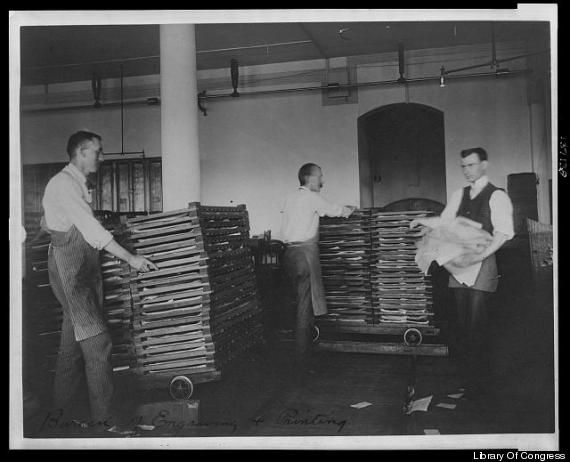 (Photo credit: Library Of Congress, "Workers moving newly printed currency into a drying box where sheets will dry before the next wetting and printing at the Bureau of Engraving & Printing," 1890)
(Photo credit: Library Of Congress, "Workers moving newly printed currency into a drying box where sheets will dry before the next wetting and printing at the Bureau of Engraving & Printing," 1890)
Not until the 1900s was there a significant fight for an eight-hour workday. According to the Nation, at the time, some magazines viewed the movement as the “eight-hour delusion” and a “movement for growing rich faster by working less.” Roosevelt's Fair Labor Standards Act instituted a maximum work week of 44 hours. 5. Workers Were Entitled To Little Protection On The Job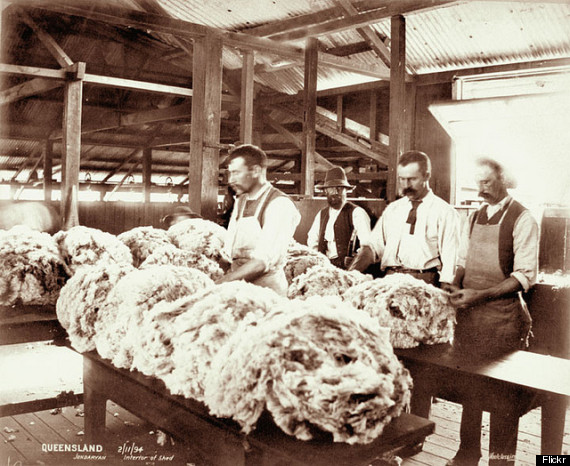 (Photo credit: Flickr, "Interior of wool shed, Jondaryan," 2 November 1894)
(Photo credit: Flickr, "Interior of wool shed, Jondaryan," 2 November 1894)
In 1908, the Federal Employers Liability Act became one of the first significant piece of legislation to protect workers doing dangerous jobs. The act protected and compensated railroad workers who were hurt on the job. 6. Workers Were Not Protected Against Discrimination 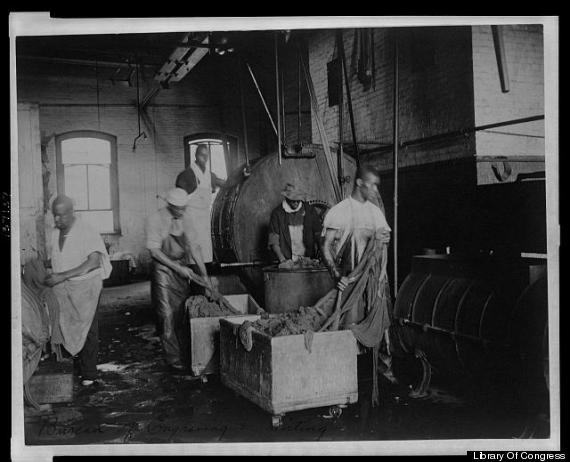 (Photo credit: Library Of Congress, "African American workers doing laundry at the Bureau of Engraving & Printing," 1895)
(Photo credit: Library Of Congress, "African American workers doing laundry at the Bureau of Engraving & Printing," 1895)
Only in 1964 did Congress pass an act -- Title VII of the Civil Rights Act, specifically -- that said workers could not be discriminated against based on "race, color, religion, sex, and national origin.”7. There Was No Social Security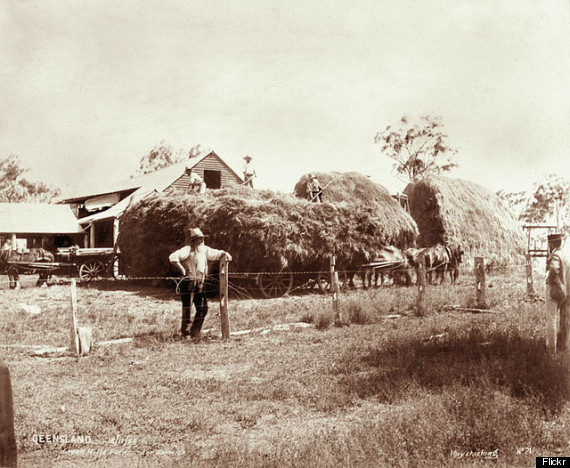 (Photo credit: Flickr, "Hay stacking, Green Hills Farm near Warwick," 16 November 1894)
(Photo credit: Flickr, "Hay stacking, Green Hills Farm near Warwick," 16 November 1894)
In 1935, President Roosevelt became the first president to advocate for financial security for the nation's elderly workers with the Social Security Act.
8. There Was No Formal System For Employer-Based Healthcare  (Photo credit: Flickr, "Dry Dock Engine Works machine shop interior," 1894)
(Photo credit: Flickr, "Dry Dock Engine Works machine shop interior," 1894)
It was not until World War II that our modern system of employer-based health insurance began to form. With the government rationing goods after the war, factory owners used healthcare as a way to poach workers.
9. Unemployment Insurance Did Not Exist 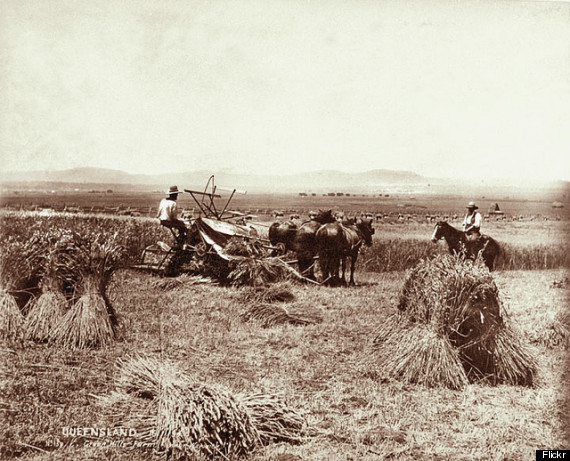 (Photo credit: Flickr, "Green Hill Farm," 1894)
(Photo credit: Flickr, "Green Hill Farm," 1894)
In 1932, Wisconsin became the first state to enact protections for workers who involuntarily lost their jobs. By 1937, the 48 states, Alaska, Hawaii, and the District of Columbia moved forward with their own laws regarding unemployment insurance.
Still, In 2013...
1. Most Families Still Cannot Afford To Live On The Minimum Wage The federal minimum wage, which currently stands at 7.25 an hour, is not enough to keep American families out of poverty, according to the Center For Economic And Policy Research. Fast food strikes have recently spread across the nation as workers protest for an hourly minimum wage of $15 and other protections.
The federal minimum wage, which currently stands at 7.25 an hour, is not enough to keep American families out of poverty, according to the Center For Economic And Policy Research. Fast food strikes have recently spread across the nation as workers protest for an hourly minimum wage of $15 and other protections.
2. Many Workers Are Still Not Entitled To Paid Sick Leave Some 38 percent of U.S. workers are entitled to absolutely no paid sick leave, according to the Center For American Progress. That translates to roughly 40 million Americans who lose out on income when they fall ill.
Some 38 percent of U.S. workers are entitled to absolutely no paid sick leave, according to the Center For American Progress. That translates to roughly 40 million Americans who lose out on income when they fall ill.
3. Women Are Still Fighting To Close The Gender Wage Gap The gender wage gap still very much exists, and there is evidence that it may actually be growing. In 2012, the gender wage gap widened as women made 81 percent as much as male workers, according to data from the Labor Department.
The gender wage gap still very much exists, and there is evidence that it may actually be growing. In 2012, the gender wage gap widened as women made 81 percent as much as male workers, according to data from the Labor Department.
4. Workplace Discrimination Still Exists  Although the 1964 Civil Rights Act prohibited discrimination, studies have shown black applicants are still discriminated against during the hiring process.
Although the 1964 Civil Rights Act prohibited discrimination, studies have shown black applicants are still discriminated against during the hiring process.
5. The U.S. Remains The Only Developed Nation Without Legally-Mandated Vacations As this graph from a Center For Economic And Policy Research study shows, the U.S. remains far behind its peers when it comes to allowing workers paid vacation. Senior Economist at CEPR John Schmitt said in an interview with The Huffington Post that part-time workers and low-wage workers have even less freedom when it comes to vacation and often don't have paid vacation for national holidays like Labor Day.
As this graph from a Center For Economic And Policy Research study shows, the U.S. remains far behind its peers when it comes to allowing workers paid vacation. Senior Economist at CEPR John Schmitt said in an interview with The Huffington Post that part-time workers and low-wage workers have even less freedom when it comes to vacation and often don't have paid vacation for national holidays like Labor Day.
